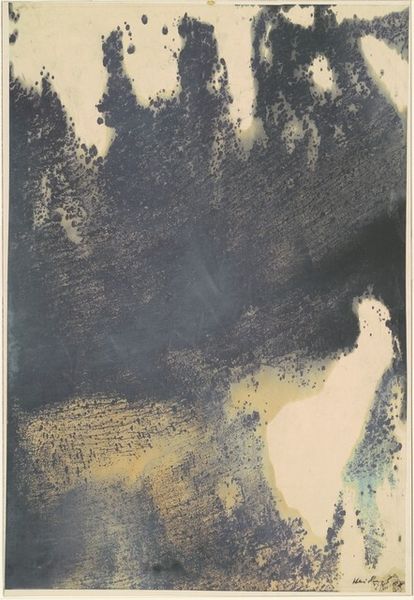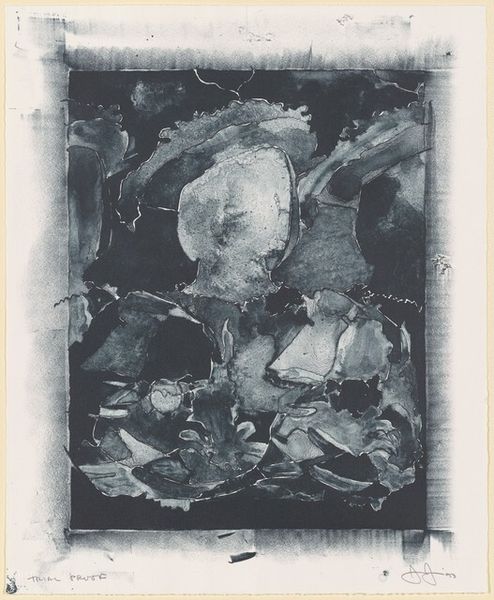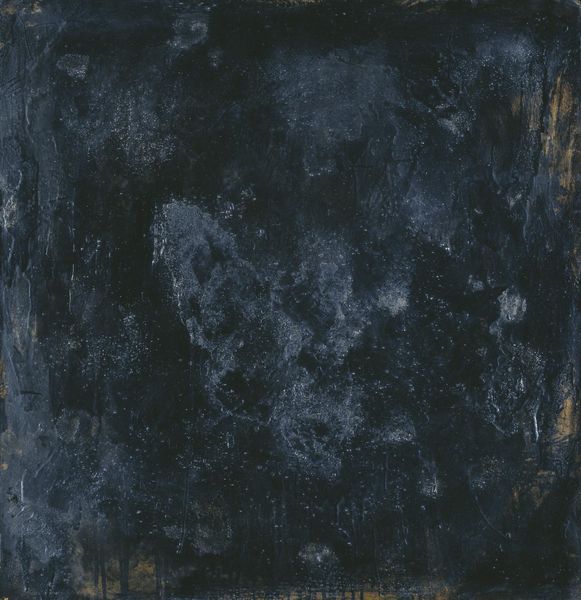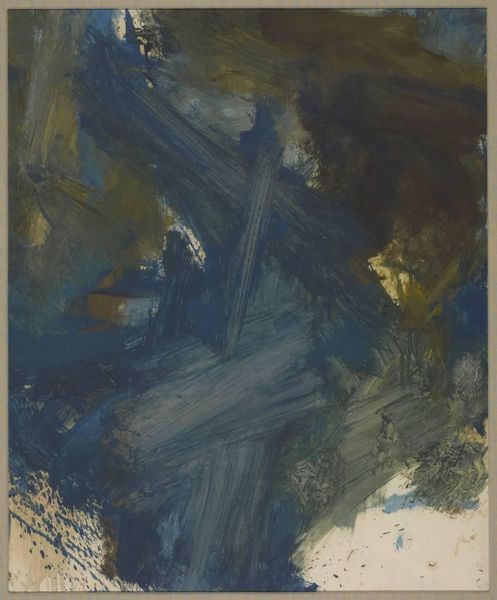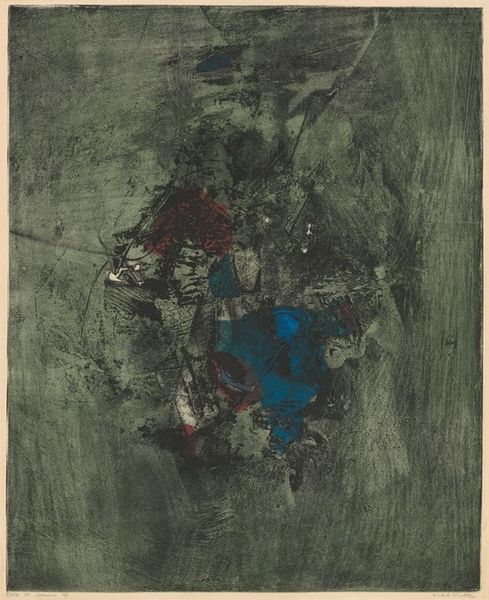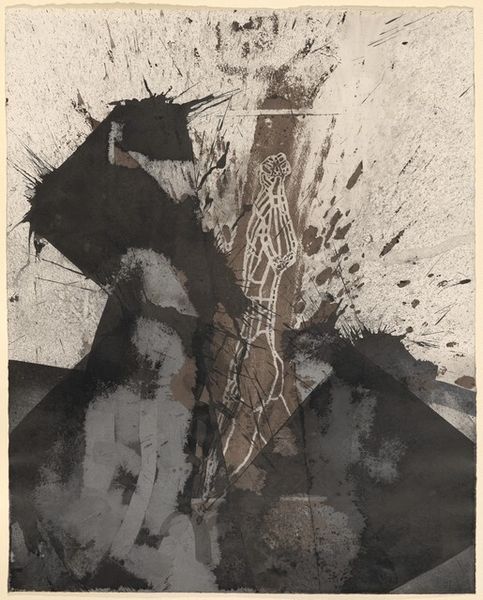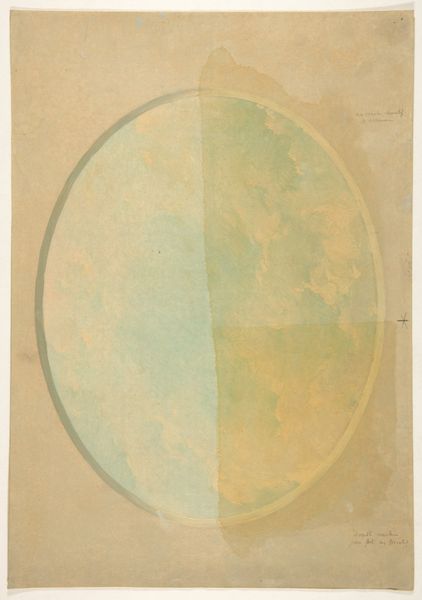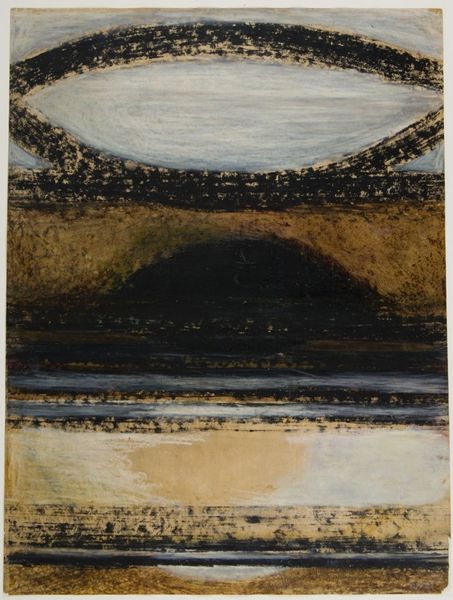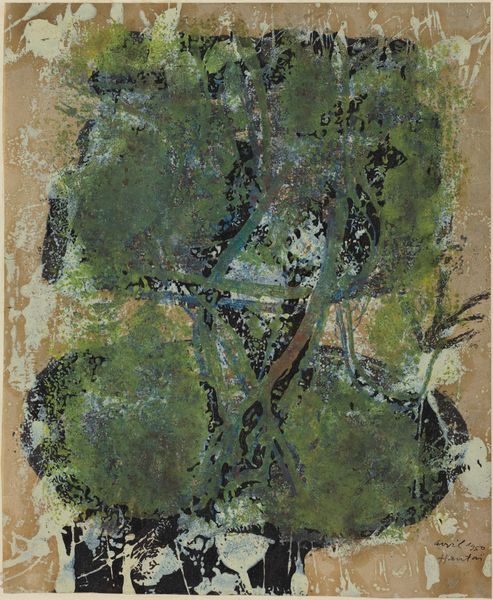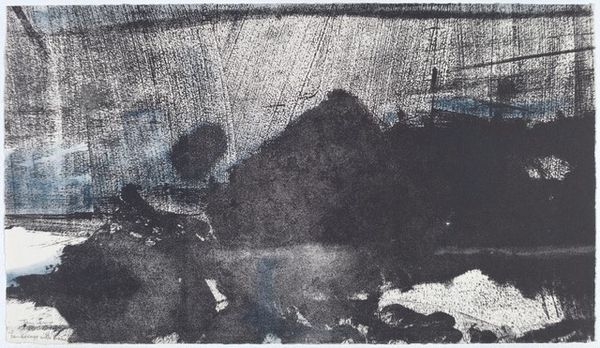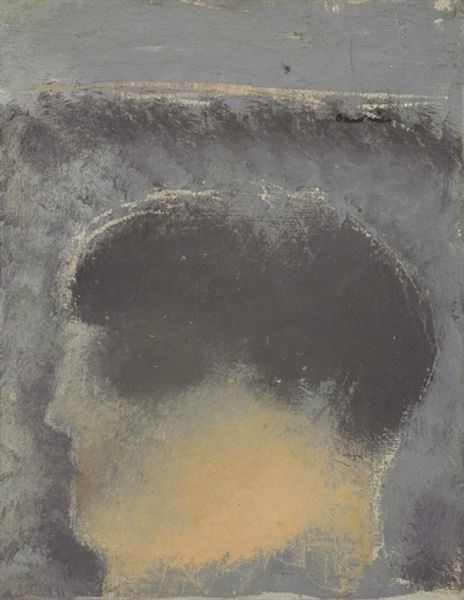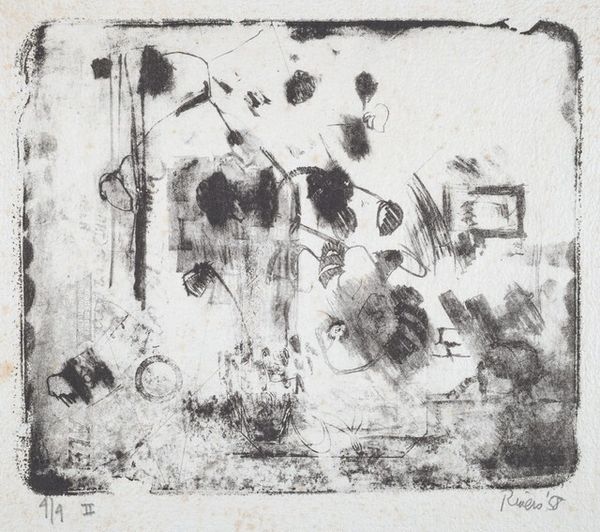
Copyright: Jean Fautrier,Fair Use
Editor: This is Jean Fautrier's "Artichaut," painted in 1926 using oil paint. There's something unsettling about it, even though it’s ostensibly just an artichoke. What stands out most to me is the heavy, almost oppressive darkness surrounding the subject. How do you interpret this work? Curator: The oppressive darkness you perceive speaks volumes, doesn't it? Considering Fautrier's life, marked by social alienation, wartime experiences, and even torture, we can see the artichoke as a symbol loaded with vulnerability and perhaps even defiance. The Fauvist influences combine raw emotion with an interest in exploring themes of existential angst that gained even more resonance in a fractured postwar world. Does the texture strike you as intentionally rough, almost brutal? Editor: Absolutely, the thick impasto really emphasizes that brutality. I was so focused on the gloom that I almost missed how tactile the painting is. What is your sense of this "matter painting" in this context? Curator: The physicality becomes crucial. By building up the paint, Fautrier confronts us with a visceral reminder of the body, of materiality itself, and how society often inflicts its power onto bodies. Look closely: how does the vulnerability of the soft, yielding artichoke against the harsh, angular darkness evoke a conversation around power and control for you? Does it read to you as simply an artichoke or perhaps a potent symbol? Editor: Now that you point it out, I see something beyond the vegetable itself, especially given his biography. The contrast between the vulnerable, yielding artichoke and the dark surrounding it suggests the fragility of life, and the brutal textures convey how power can inflict itself on more vulnerable beings. It is much more thought-provoking than just a piece of fauvist matter painting, it feels deeply political! Curator: Precisely! It shows that art, even in its most abstract form, can engage with the world around us in a profound way, reflecting and refracting the sociopolitical currents of its time. Editor: This has completely shifted how I see the painting; I will keep the background and era of an artist in mind! Curator: As will I – seeing it now more than just abstract. The exchange of ideas really opened both our eyes to new insights, no?
Comments
No comments
Be the first to comment and join the conversation on the ultimate creative platform.
